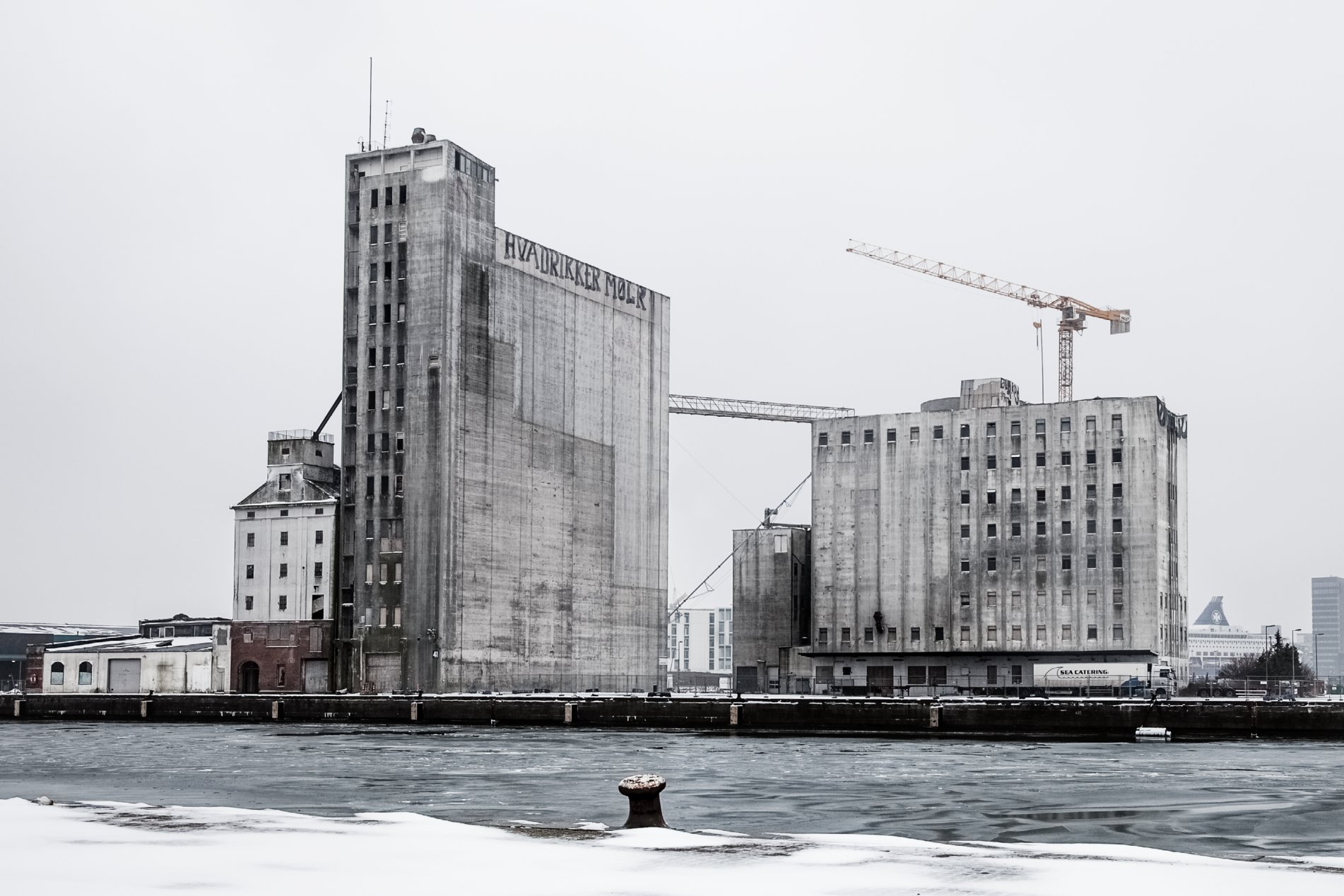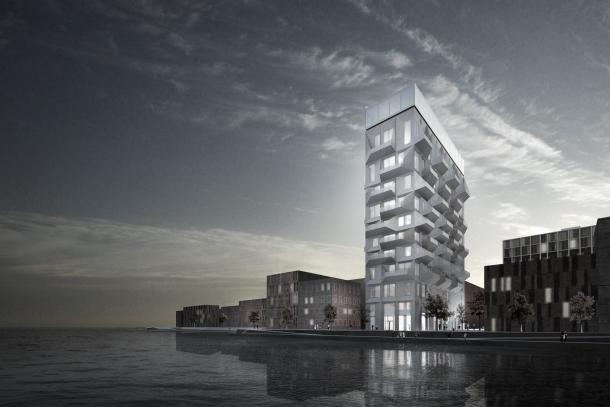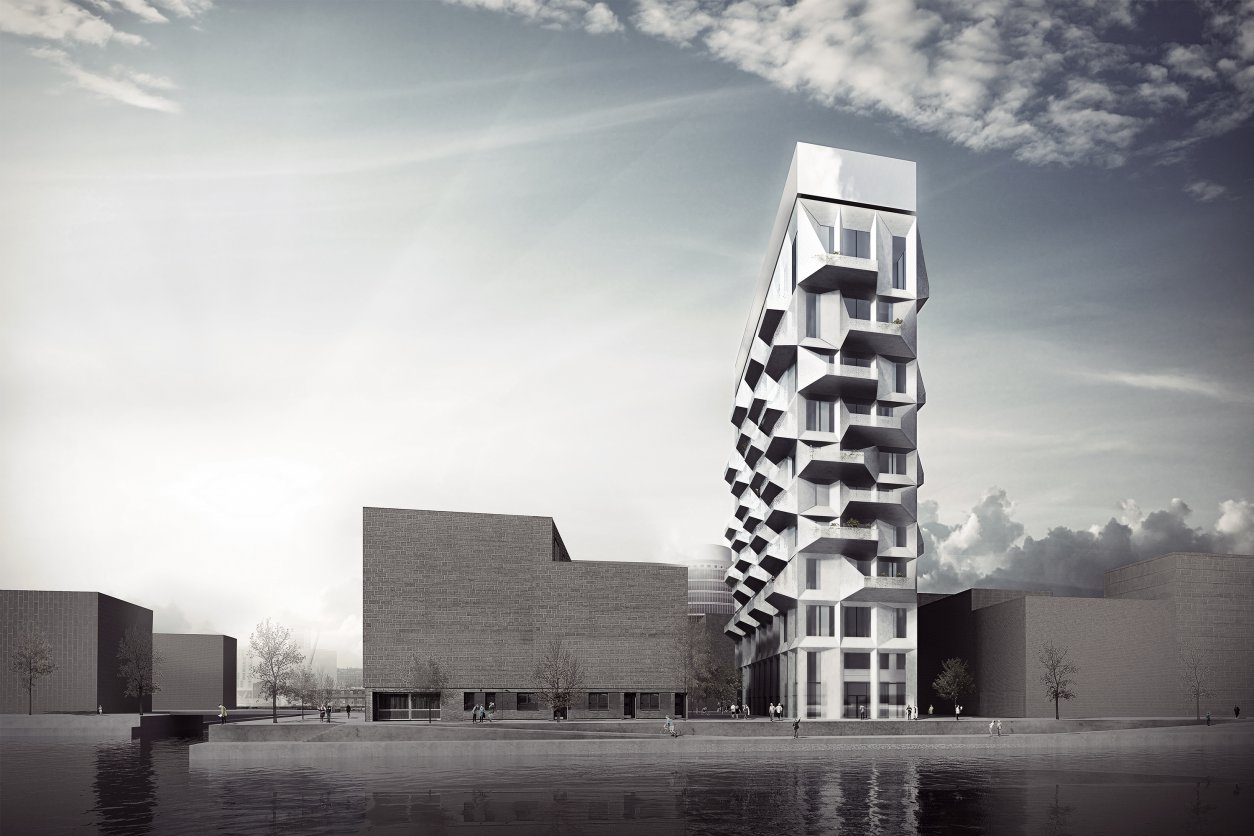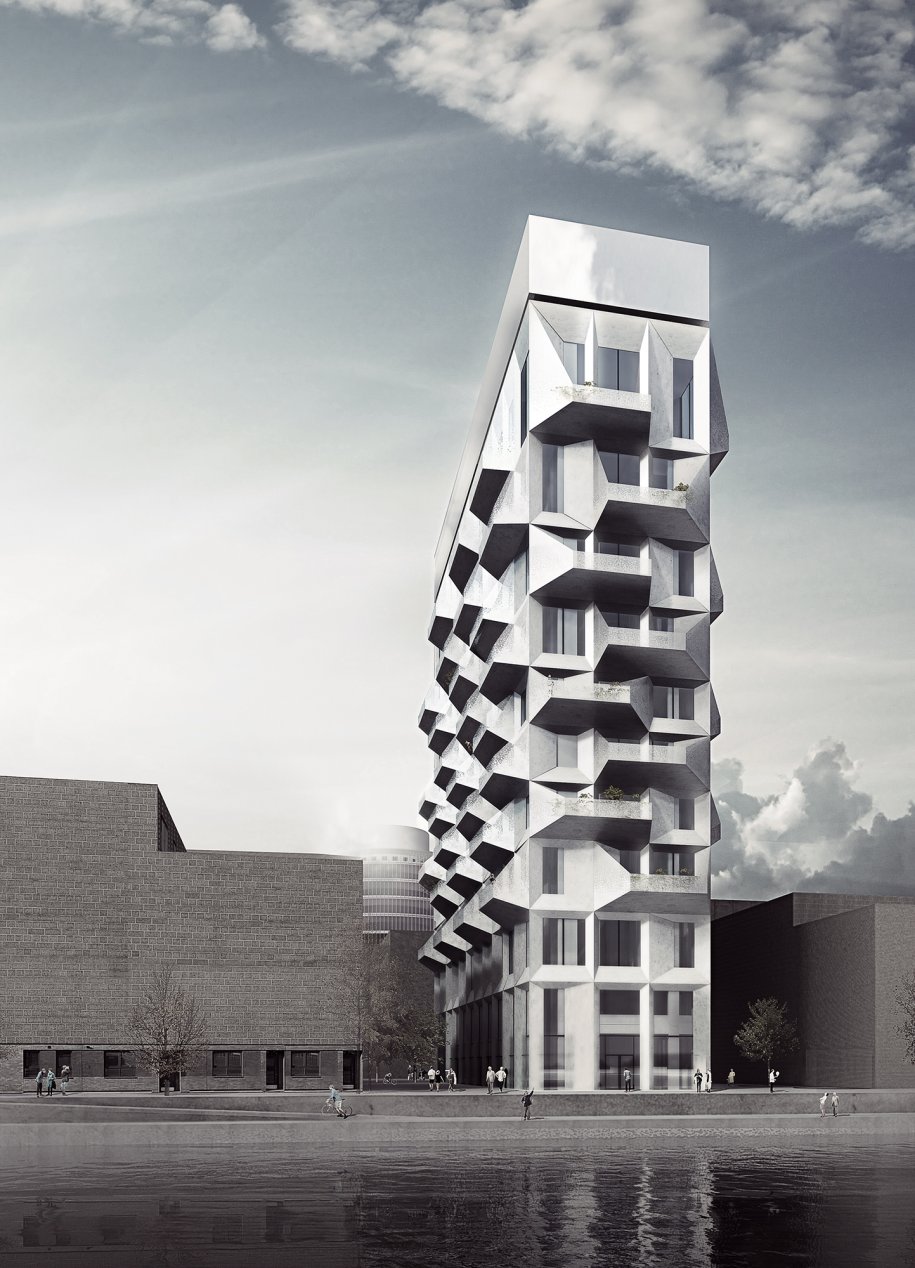A 200-foot-tall, 17-story industrial silo in Copenhagen’s Nordhavnen harbor is the largest and one of the most iconic landmarks of the area, but its function doesn’t match the needs of the district.
In 2013, By og Havn, a port development enterprise jointly owned by the city of Copenhagen and the Danish government, took the lead to transform Nordhavnen into a bustling, commercial area planned to bring tens of thousands of apartments and jobs.
Part of the transformation would involve the iconic silo’s conversion into a residential tower. Danish firm COBE Architects was brought in to execute the project, according to a report by Inhabitat.
To soften the industrial and highly utilitarian design of the original structure—which was used to store corn and grains for decades—COBE will envelope the original concrete structure with layers of different-sized white balconies.
The building’s interior will preserve the mostly exposed concrete of the original structure.

The silo as it exists today. Photo courtesy COBE Architects

Rendering of the planned conversion. Rendering courtesy COBE Architects
Because of the building’s original function and demand for different-sized spaces for storage, the new residential building will feature a variety of apartment configurations and sizes.
The waterfront development includes a United Nations campus called UN City that opened in 2013 at the eastern part of the Nordhavnen area.
According to Danish engineering website Ingeniøren, the Nordhavnen project uses 28,000 tons of steel, making it the largest construction job in Denmark and the largest consumer of steel in Northern Europe.
For more information and renderings, checkout the slideshow at cobe.dk.
Related Stories
| Sep 21, 2022
Demand for design services accelerates
Demand for design services from U.S. architecture firms grew at an accelerated pace in August, according to a new report today from The American Institute of Architects (AIA).
K-12 Schools | Sep 21, 2022
Architecture that invites everyone to dance
If “diversity” is being invited to the party in education facilities, “inclusivity” is being asked to dance, writes Emily Pierson-Brown, People Culture Manager with Perkins Eastman.
| Sep 20, 2022
NIBS develops implementation plan for digital transformation of built environment
The National Institute of Building Sciences (NIBS) says it has developed an implementation and launch plan for a sweeping digital transformation of the built environment.
| Sep 20, 2022
New Long Beach office building reflects Mid-Century Modern garden-style motif
The new Long Beach, Calif., headquarters of Laserfiche, a provider of intelligent content management and business process automation software, was built on a brownfield parcel previously considered undevelopable.
| Sep 19, 2022
New York City construction site inspections, enforcement found ‘inadequate’
A new report by the New York State Comptroller found that New York City construction site inspections and regulation enforcement need improvement.
| Sep 16, 2022
Fairfax County, Va., considers impactful code change to reduce flood risk
Fairfax County, Va., in the Washington, D.C., metro region is considering a major code change to reduce the risk from floods.
Multifamily Housing | Sep 15, 2022
Heat Pumps in Multifamily Projects
RMI's Lacey Tan gives the basics of heat pumps and how they can reduce energy costs and carbon emissions in apartment projects.
| Sep 15, 2022
Monthly construction input prices dip in August
Construction input prices decreased 1.4% in August compared to the previous month, according to an Associated Builders and Contractors analysis of U.S. Bureau of Labor Statistics Producer Price Index data released today.
| Sep 15, 2022
First LEED Platinum, net zero and net zero water synagogue opens
Kol Emeth Center, the world’s first LEED Platinum, net zero and net zero water synagogue, opened recently in Palo Alto, Calif.
| Sep 14, 2022
Fires on Amazon warehouse roofs seemingly caused by faulty PV installations
Amazon has made installing solar panels on rooftops a key part of its ESG strategy, but a series of events last year show how challenging greening up major facilities can be.






















